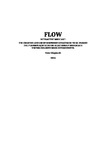FLOW. INTERACTIVE SONIC ART: THE CREATION AND USE OF RESPONSIVE STRATEGIES TO RE-IMAGINE THE PERFORMER/SPECTATOR RELATIONSHIP AND CREATE VISITOR INCLUSIVE SONIC ENVIRONMENTS.
| dc.contributor.supervisor | Miranda, Eduardo | |
| dc.contributor.author | Shepherd, Peter | |
| dc.contributor.other | Faculty of Arts, Humanities and Business | en_US |
| dc.date.accessioned | 2016-12-08T15:52:56Z | |
| dc.date.available | 2016-12-08T15:52:56Z | |
| dc.date.issued | 2016 | |
| dc.identifier | 10539462 | en_US |
| dc.identifier.uri | http://hdl.handle.net/10026.1/8092 | |
| dc.description.abstract |
FLOW operates on two levels, firstly as an engaging live performance environment and secondly as a vehicle to discuss a number of philosophical ideas relating to sound as art. As a performance piece FLOW exists to provide an inclusive interactive environment for musicians and casual visitors alike. A series of sensors allow those who enter the arena to make interventions in an immersive soundscape through their movements, opening up possibilities for the exploration of sound and gestural action within the space. The piece challenges the conventional roles of performer and spectator and offers interactive technology as a means of uniting the two. The artist creates a re-imagination of the performance paradigm based on active engagement rather than passive observance through the establishment of a circular discourse between human and computer. The following paper will also examine the nature of sound as art, suggesting that the poststructural ideas of Derrida and Deleuze and Guattari can be used as a conduit to define sonic emergences and morphologies within a Human/computer discourse, both in terms of timbral nature and spatial diffusion. Central to this is the concept that suggests the relationship between man and machine in interactive sonic art is one of energy transfer from organic fluidity to digital regulation and back to energy in the form of processed sound, according to the processes put in place. This leads into a final discussion of the nature of experimental compositional process, the choice between the determinate and the stochastic and the compromises between these that may need to be made to retain artistic coherence. | en_US |
| dc.language.iso | en | |
| dc.publisher | University of Plymouth | |
| dc.rights | CC0 1.0 Universal | * |
| dc.rights.uri | http://creativecommons.org/publicdomain/zero/1.0/ | * |
| dc.subject | Sonic art | en_US |
| dc.subject | Interactivity | |
| dc.subject | Experimental music | |
| dc.subject.classification | ResM | en_US |
| dc.title | FLOW. INTERACTIVE SONIC ART: THE CREATION AND USE OF RESPONSIVE STRATEGIES TO RE-IMAGINE THE PERFORMER/SPECTATOR RELATIONSHIP AND CREATE VISITOR INCLUSIVE SONIC ENVIRONMENTS. | en_US |
| dc.type | Thesis | |
| plymouth.version | publishable | en_US |
| dc.identifier.doi | http://dx.doi.org/10.24382/1138 | |
| dc.rights.embargoperiod | No embargo | en_US |
| dc.type.qualification | Masters | en_US |
| rioxxterms.funder | Not available | en_US |
| rioxxterms.identifier.project | Not available | en_US |
| rioxxterms.version | NA |
Files in this item
This item appears in the following Collection(s)
-
01 Research Theses Main Collection
Research Theses Main



